Amazing tourist attractions and destinations being DESTROYED by the weather
Weather watch

TIMOTHY CLARY/AFP/Getty Images
Some of the world’s most spectacular places are falling victim to severe weather as a result of climate change. Whether it’s melting glaciers, rising seas, fiercer storms or dreadful floods, the short and long-term effects of global warming are putting many of the world’s prime destinations at risk. Here we look at some tourist attractions that are under threat.
Read on to see how the climate crisis is impacting your favourite destination...
Elephanta Caves, Maharashtra, India
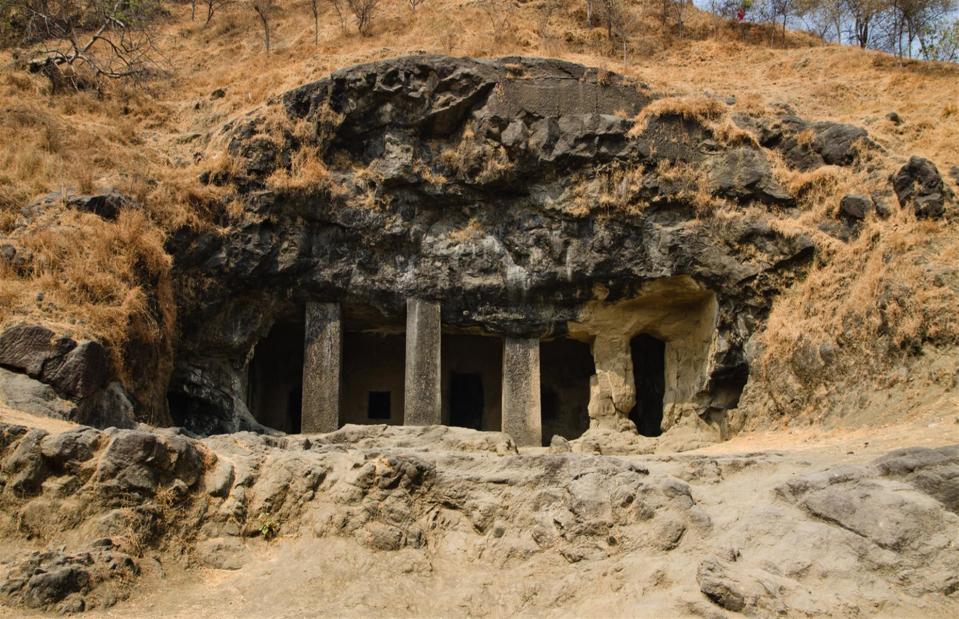
Robin Kay/Shutterstock
An ancient complex of rock-cut caves, rich in Hindu and Buddhist art and statues, has been identified as a World Heritage Site at risk as a result of rising sea levels in a report by UNESCO. Found on Elephanta Island in Mumbai Harbour, the caves are one of the coastal city’s many treasures that are facing serious threat due to climate change with rising seas and an increased frequency of extreme weather events. In 2021, the state of Maharashtra was hit with its worst July monsoon in 40 years.
The Great Mosque of Djenne, Mali

MICHELE CATTANI/AFP/Getty Images
Every year, the walls of the Great Mosque of Djenne in Mali are re-plastered by the community. Cracks and erosion of the fragile mud structure, caused by rain plus temperature and humidity changes, are repaired. Part of UNESCO’s Old Towns of Djenne World Heritage Site, it is one of Africa's most revered religious monuments and the largest mud building on Earth. While the weather has long affected its structure, the changing and unpredictable climate could be catastrophic.
The Great Mosque of Djenne, Mali
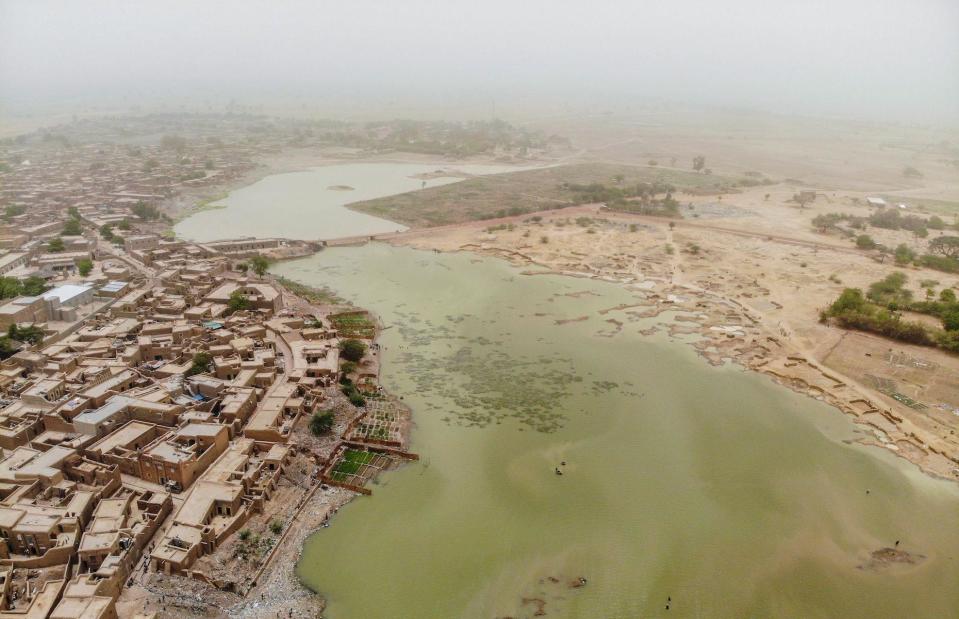
MICHELE CATTANI/AFP/Getty Images
The 2,000 traditional earthen houses of the Old Towns of Djenne, an important link in the trans-Saharan gold trade which sits on the floodplain of the Bani River, were built with the weather in mind. They sit on hillocks (or toguere) as protection from the region's seasonal floods. However, UNESCO's report notes the fragility of Djenne and other traditional earthen buildings in the changing climate as they are particularly susceptible to temperature and humidity.
Bwindi Impenetrable National Park, Uganda
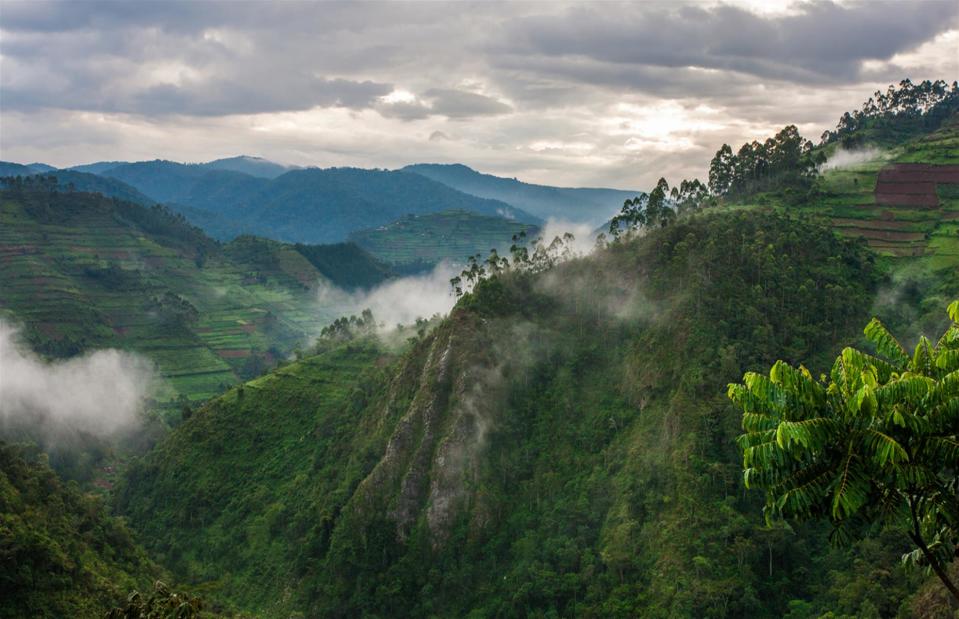
Travel Stock/Shutterstock
When it comes to bucket-list wildlife encounters, trekking into the wilds of Uganda’s misty cloud forests to watch the mesmerising mountain gorillas go about their business is up there. Bwindi Impenetrable National Park is home to almost half of the world’s mountain gorilla population but rising temperatures could drastically reduce the fragile habitat of the critically-endangered animals.
Bwindi Impenetrable National Park, Uganda
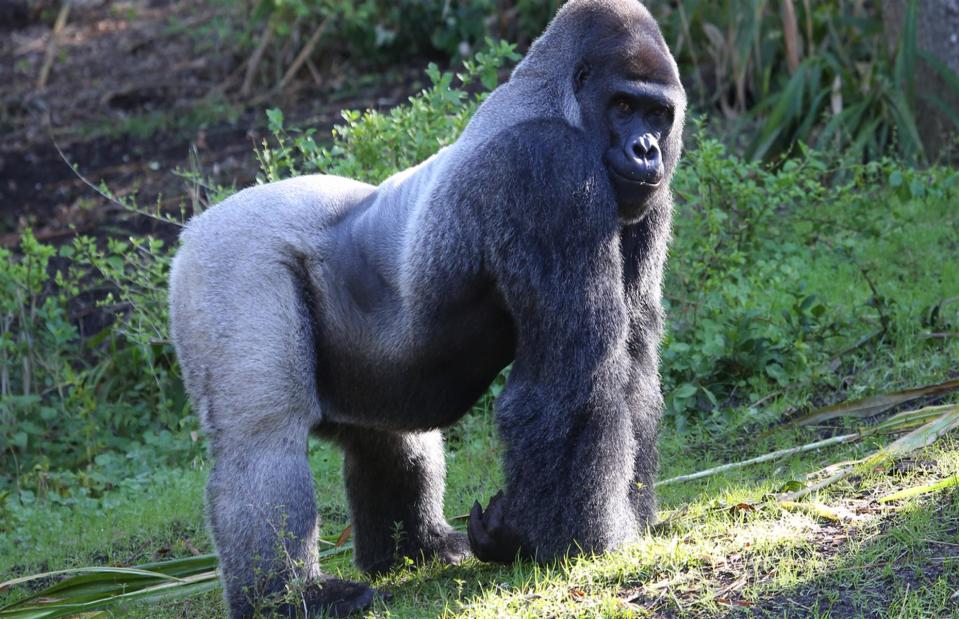
Dennis W Donohue/Shutterstock
Mountain gorillas can only be found in the Bwindi Impenetrable National Park and along the dormant volcanic Virunga mountain range that stretches into Rwanda and the Democratic Republic of the Congo. In addition to shrinking habitats, the gorillas are likely to be impacted by ripple effects of climate change as humans encroach on their territory. As the dry season gets longer and more severe, people will go further into the forest in search of fresh water for drinking and agriculture.
The Dead Sea, Jordan/Israel
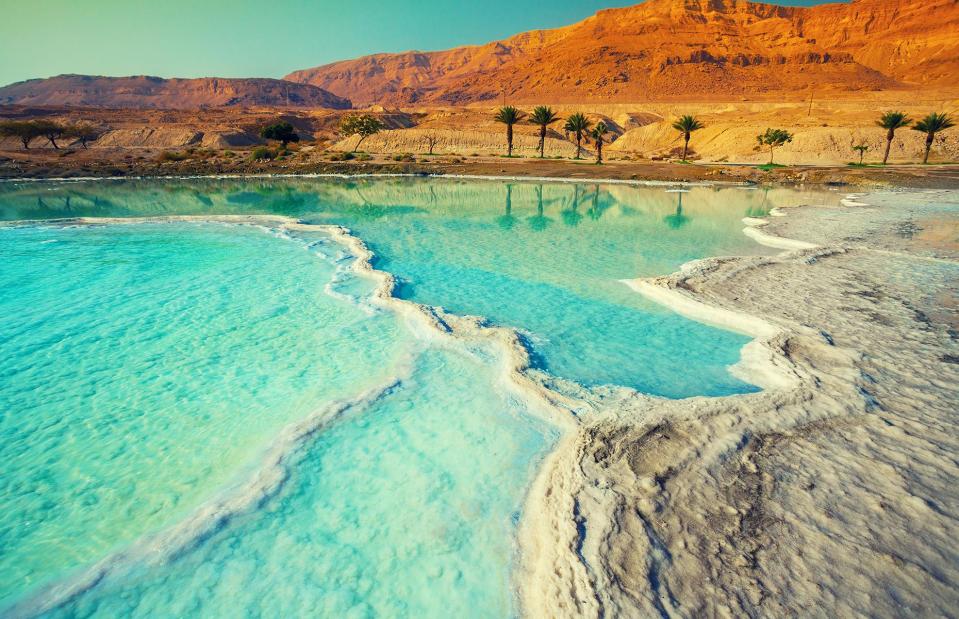
vvvita/Shutterstock
The Dead Sea is in a shocking decline – losing up to four feet (1.2m) off its shores per year. Increasingly hotter temperatures caused by climate change are part of the reason it's shrinking, but there's more to the story: pipeline systems built in the mid-20th century have diverted the inland sea's primary water sources, so they now sit at just 5% of their original level. Plus, the water's alleged healing properties mean that cosmetic companies have also taken a share. The future of the Dead Sea is so uncertain that some experts estimate it'll be completely dry by 2050.
Venice, Italy
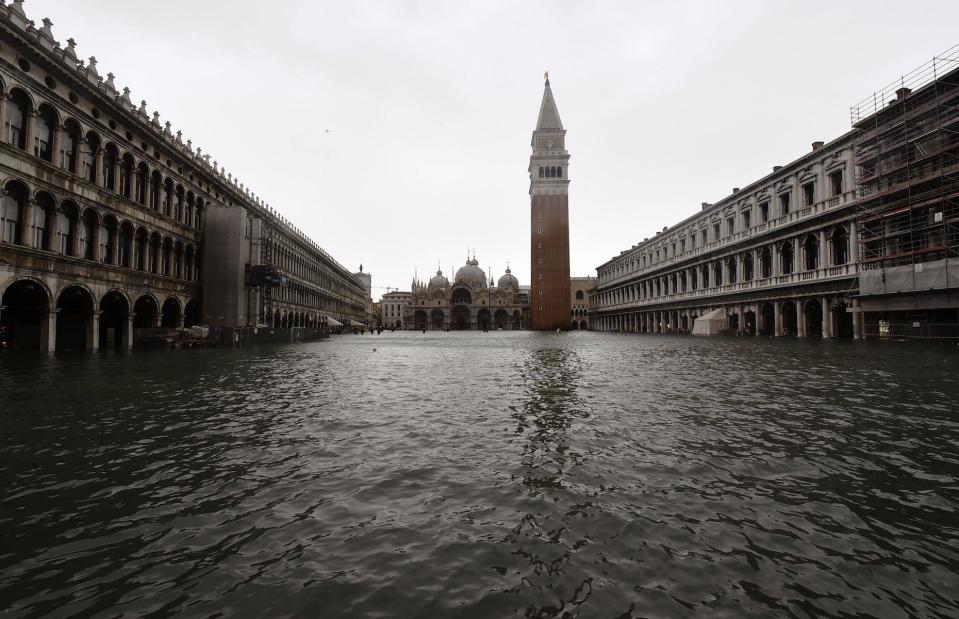
MIGUEL MEDINA/AFP/Getty Images
Water is intertwined with the Venetian way of life and culture, but it’s also threatening its existence. The low-lying city faces seasonal flooding, known as acqua alta, four times a year but the frequency and severity is increasing. In November 2019, Venice was hit by the worst flooding since the Great Flood of 1966 following high tides and powerful storms. Many iconic buildings were damaged, including St Mark's Basilica.
Venice, Italy
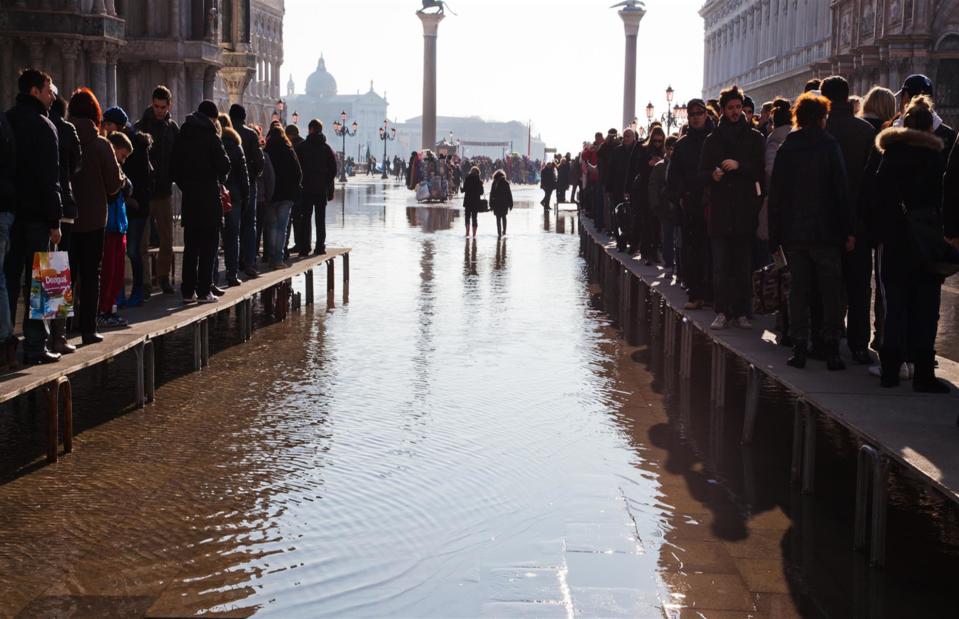
Christian Mueller/Shutterstock
With Mediterranean Sea levels projected to rise five to six feet (1.5 to 1.8m) by 2100, not only are the city’s fragile monuments under threat, but its very existence is too. Construction on a system of flood gates, called MOSE, started in 2003 between the lagoon and the Adriatic Sea with the aim of gentling the effects of the acqua alta. Despite myriad issues and controversies, the gates were first activated in October 2020, preventing flooding of lower parts of the city, in particular Piazza San Marco.
Cape Floral Region Protected Areas, South Africa
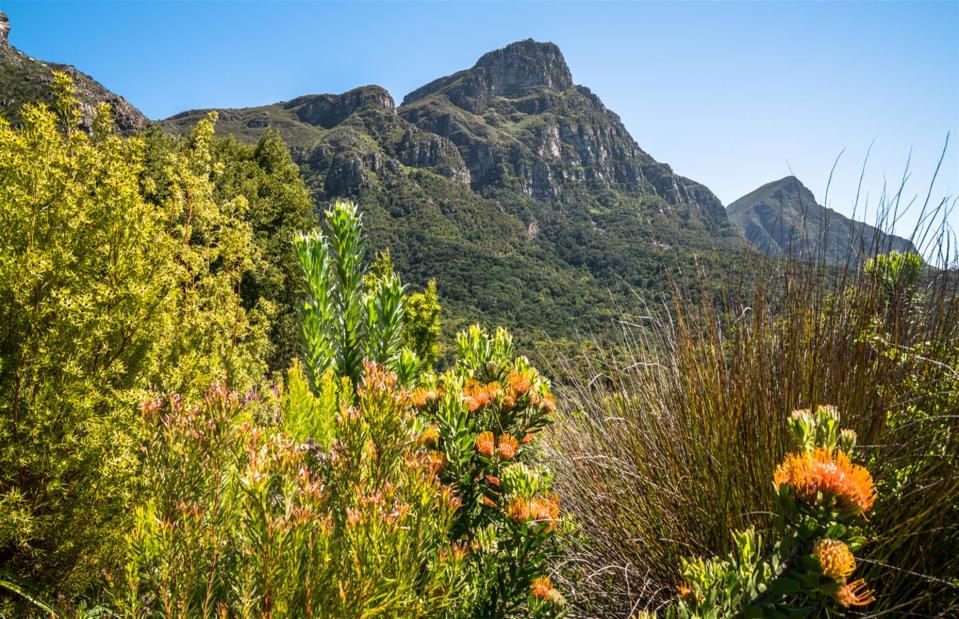
Mhenrion/Shutterstock
Rising temperatures and droughts are likely to affect one of the most biologically diverse regions on Earth – South Africa’s Cape Floral Region. The vast swathe of protected land, which covers 2.5 million acres, includes Table Mountain, Garden Route National Parks and Kirstenbosch National Botanical Garden. At least 30% of its plant species are not found anywhere else on the planet but with hotter temperatures and increased incidences of fires, the region’s wildflowers could cease to exist.
Cape Floral Region Protected Areas, South Africa
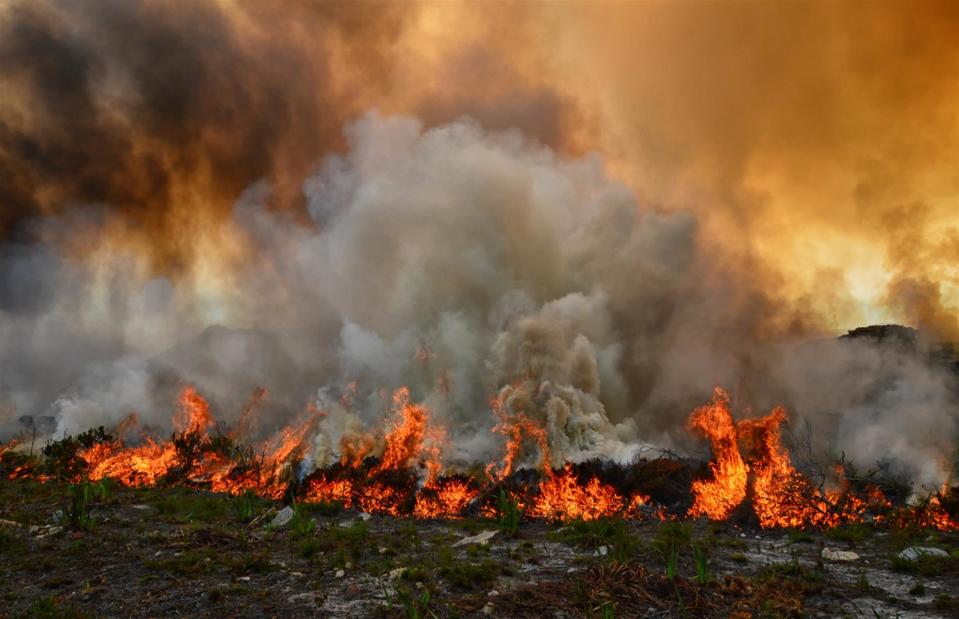
Cathy Withers-Clarke/Shutterstock
A UNESCO report noted that "climate models suggest that by 2070 the [floral region] will experience average temperatures over 10 months of the year that would have been considered extreme in 1961 to 1990". As well as the flora, the fire-prone ecosystem’s bird population will also be affected by the increasingly extreme climate conditions, many of which pollinate the wildflowers.
Easter Island, Chile
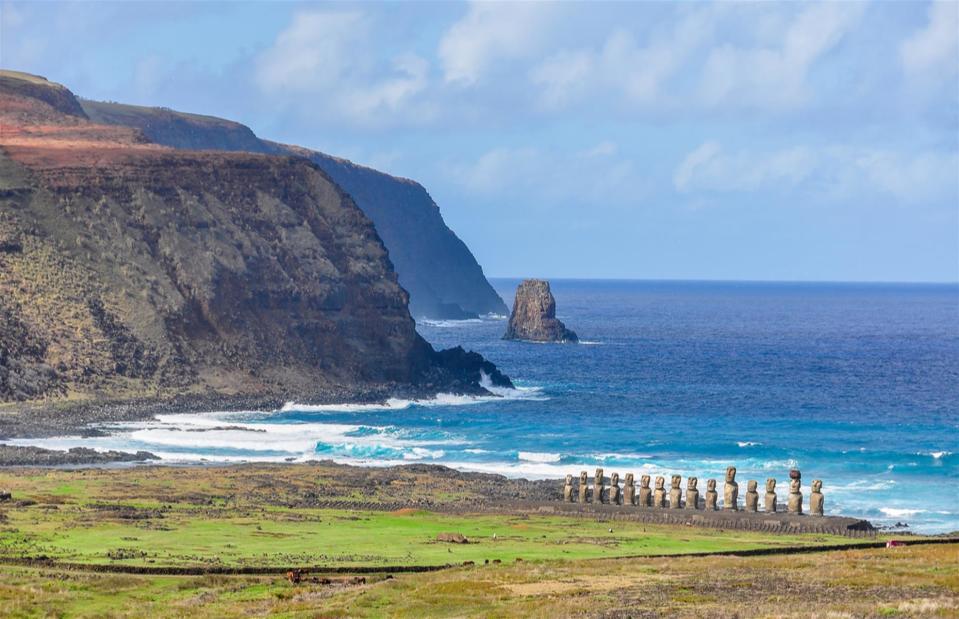
Gabor Kovacs Photography/Shutterstock
Lying 2,000 miles (3,220km) off the coast of Chile, it might be one of the world’s most remote heritage sites, but that doesn’t protect Easter Island from the irreparable damage caused by climate change. Rising sea levels are rapidly eroding the Pacific island’s coasts with some of its ancient stone statues at risk of being lost to the sea forever. It is one of the heritage sites most vulnerable to climate change in the world, according to a UNESCO report.
Easter Island, Chile
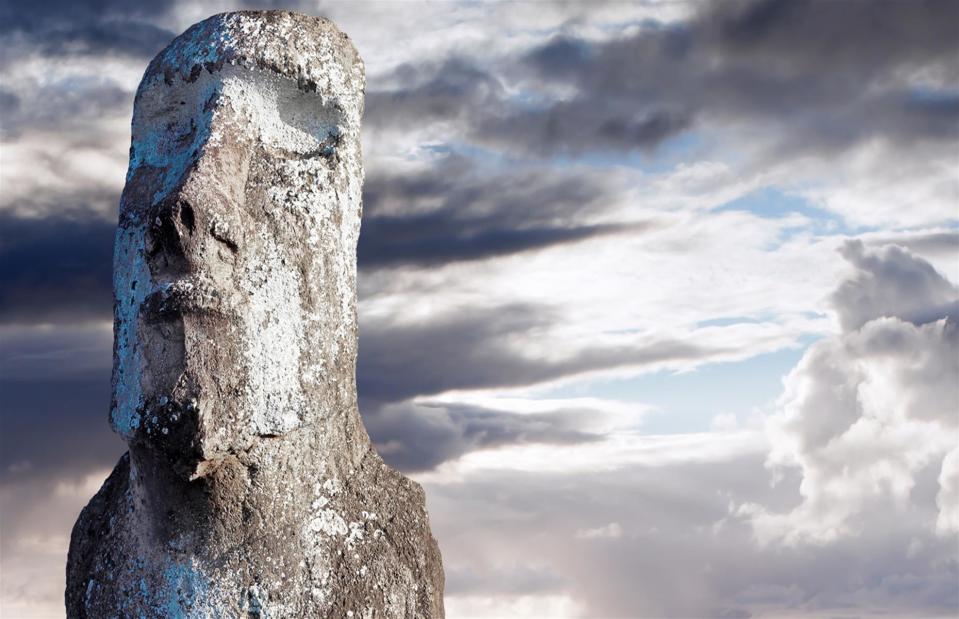
Tero Hakala/Shutterstock
Having withstood the effects of wind and saltwater for more than half a millennium, the integrity of the moai, as the giant stone heads are known, is increasingly precarious. The island is dealing with other effects of climate change, including cooler waters, caused by fluctuating global temperatures, and less rainfall – 2017 was its driest year on record. Another threat to the mysterious monoliths are patches of lichen which are eating away at some of them.
White Cliffs of Dover, Kent, England, UK
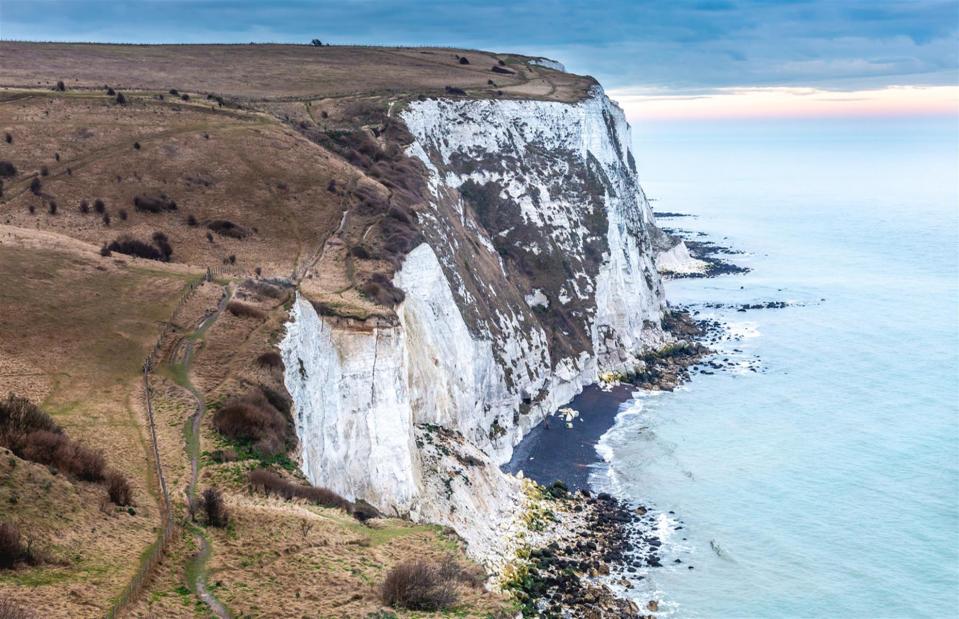
NikKulch/Shutterstock
Rising sea levels and increased stormy weather are expected to accelerate the erosion of soft-cliff coastlines, such as Britain’s fabled White Cliffs of Dover. Researchers found the chalky shores of southern England had retreated between nine and 12.5 inches (22 and 32cm) annually over the past 150 years. Substantial sections of the precious cliffs have fallen into the sea during the past decade's increasingly volatile winter storms – in February 2021 a huge chunk of the cliffs' middle section fell into the sea beneath it.
Great Barrier Reef, Australia
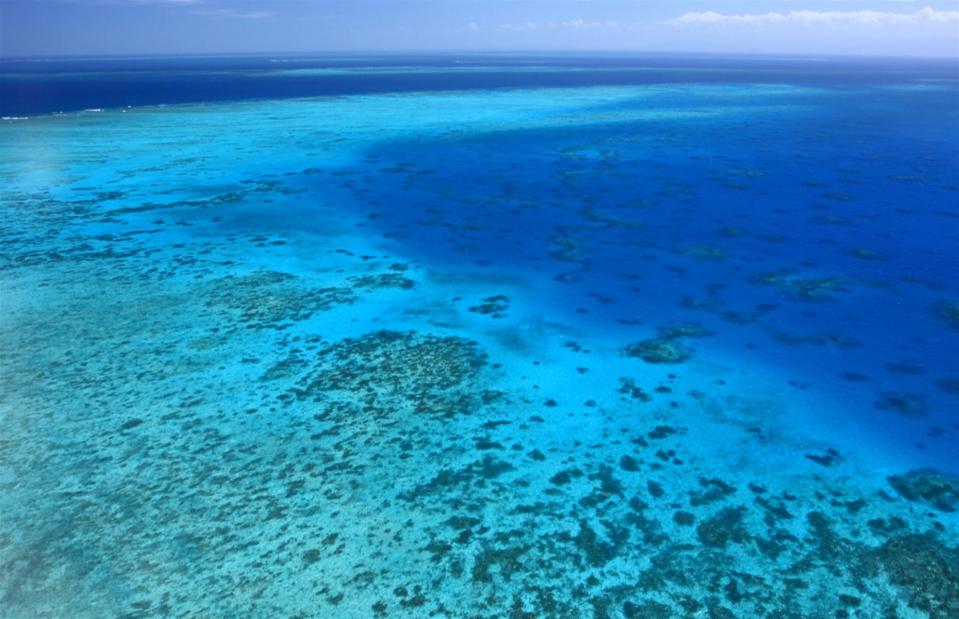
gary yim/Shutterstock
Perhaps the most high-profile example of a place visibly and irreparably damaged by climate change is Australia's Great Barrier Reef. Rising ocean temperatures have caused coral bleaching in vast portions of the world’s largest coral reef system and others around the world. The phenomenon occurs when the water temperature gets too hot and kills the algae-like organisms that grow on coral and give them their bright colours.
Great Barrier Reef, Australia
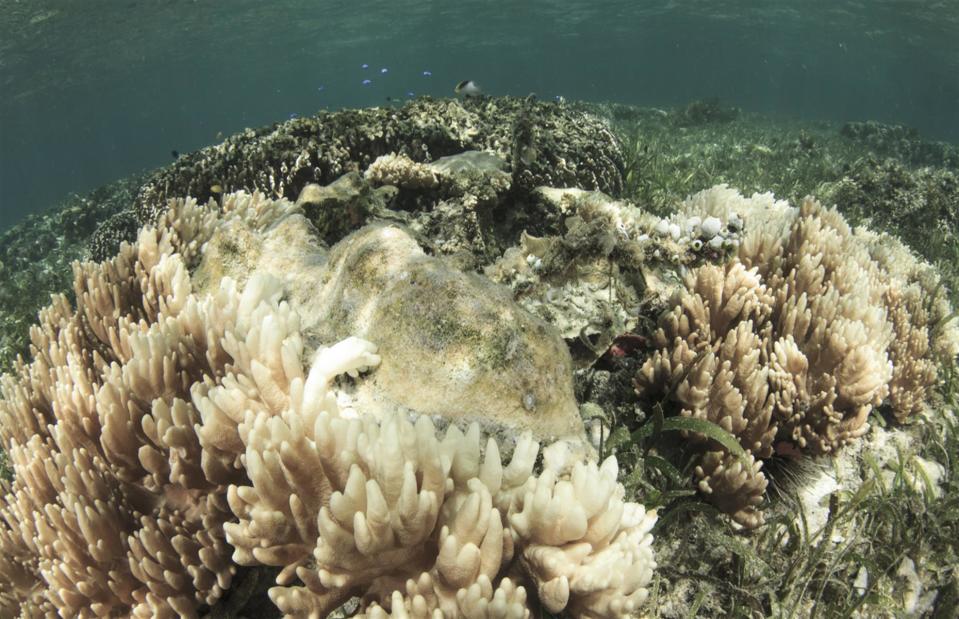
Rich Carey/Shutterstock
The worst bleaching ever to affect the Great Barrier Reef took place five times in the last eight years, in 2016, 2017, 2020, 2022 and 2024, triggered by record-breaking sea surface temperatures. As well as warmer sea temperatures, the impact of ocean acidification, rising sea levels and the increased frequency of severe weather events remain a looming threat for Australia's natural wonder, and other coral reefs and marine systems around the world.
Hoi An, Vietnam
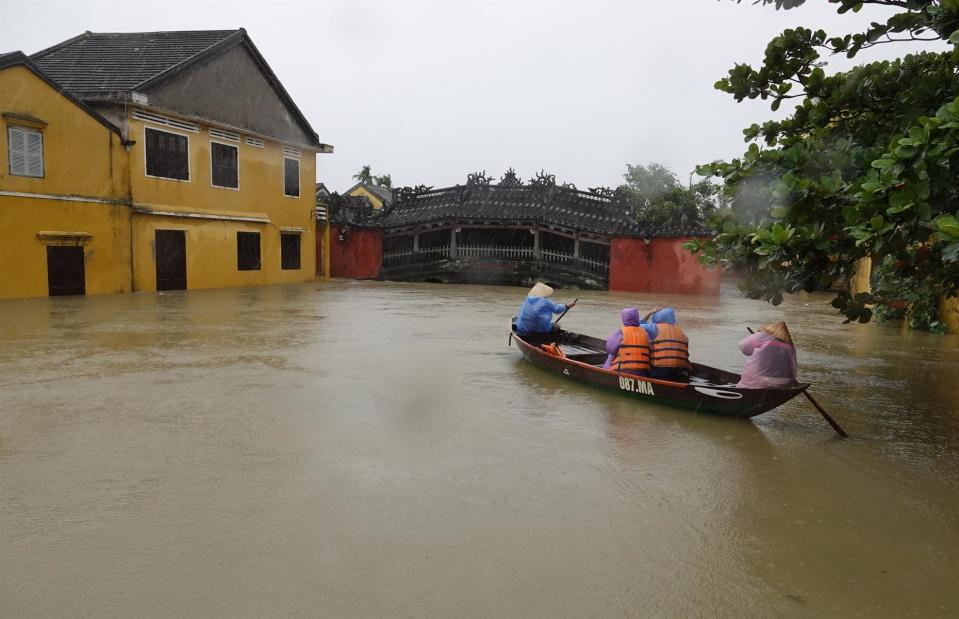
STR/AFP/Getty Images
A visit to the enchanting ancient town of Hoi An is a highlight of any trip to Vietnam. With its well-preserved, wood-framed merchants’ houses, the riverside trading port is a UNESCO World Heritage Site. However, the heritage body has highlighted the town, situated on the banks of the Thu Bon River, as at danger from climate change due to its flood-prone position. In 2017, Typhoon Damrey hammered central Vietnam with high winds and rains, causing the river to flood the town.
Hoi An, Vietnam
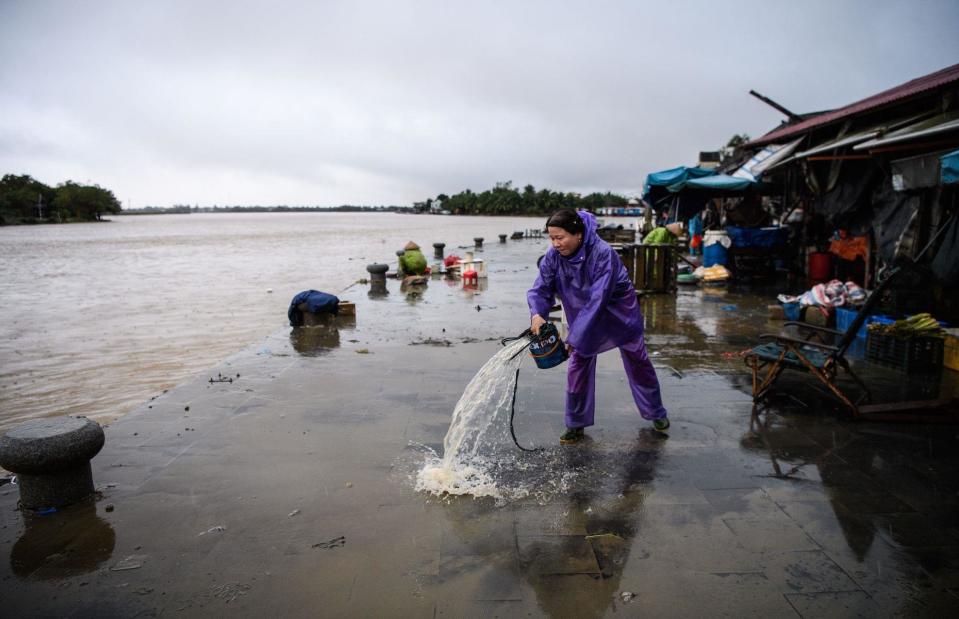
ANTHONY WALLACE/AFP/Getty Images
Much of Hoi An sits at no more than six feet (1.8m) above sea level, making it very vulnerable to storm surges and coastal erosion. UNESCO notes that the nearby popular stretch of sand, Cua Dai Beach, is already losing between 30 and 60 feet (9 and 18m) of land to erosion annually. The whole of the An Dinh district, where most of Hoi An's heritage houses are, has been flooded every year.
Galapagos Islands, Ecuador
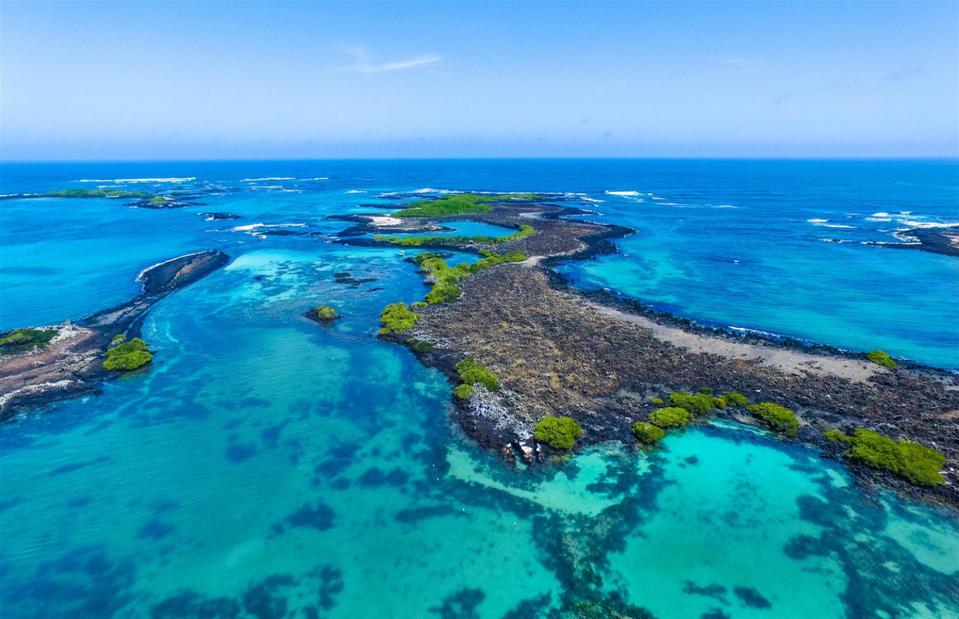
Ppito00/Shutterstock
One the world’s most spectacular, biologically significant and remote places is increasingly vulnerable to climate change. The Galapagos Islands, famed for their rich ecosystems and strange creatures that led to Charles Darwin’s evolutionary theory, are already feeling the impact of more extreme weather. Rising water temperatures during the 2014-2016, 2018-2019 and 2023 El Nino events (a warming of the eastern equatorial Pacific Ocean) affected many facets of life.
Galapagos Islands, Ecuador
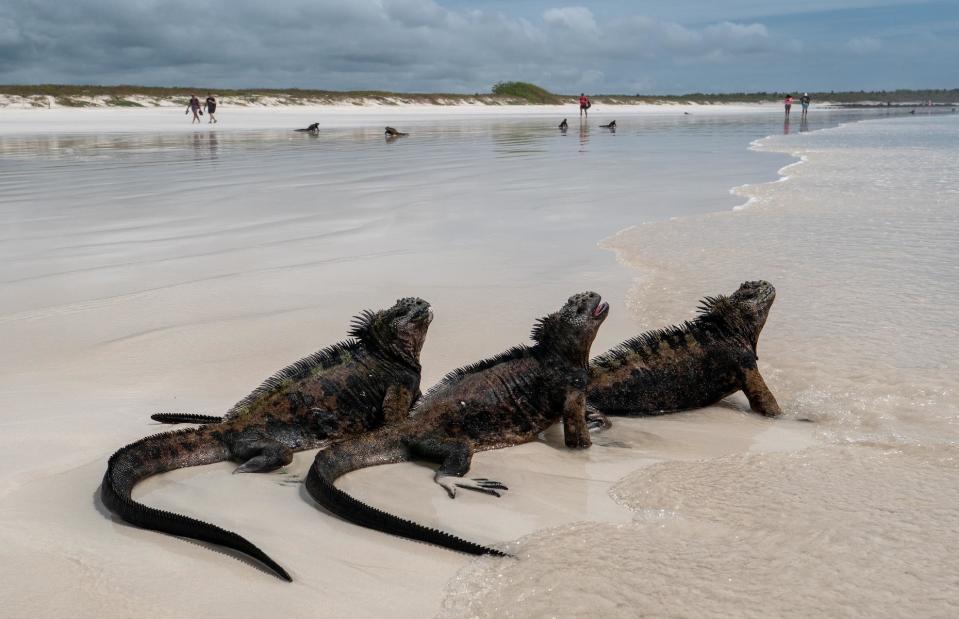
Chris J Ratcliffe/Getty Images for Lumix
Scientists widely believe the Galapagos, where species thrive in its cool subtropical climate, will face yet more severe and frequent El Ninos as the climate changes. Rising sea levels will also reduce the size of beaches (important nesting areas for many species) and ocean acidification (caused by oceans absorbing more carbon dioxide produced by humans) will also cause a loss of biodiversity with ramifications throughout the food chain. Overtourism is another looming threat.
Skara Brae, Orkney, Scotland, UK

Johnbraid/Shutterstock
Perching on the windswept coast of Orkney, Skara Brae is the best preserved Neolithic village in northern Europe. It was built 5,000 years ago and is part of the UNESCO Heart of Neolithic Orkney World Heritage Site. However, this extraordinary archaeological site is under threat. A climate study by Historic Environment Scotland found that the island's prehistoric treasures are extremely vulnerable to changes in the sea level, increased precipitation and storm intensity.
Cartagena, Colombia
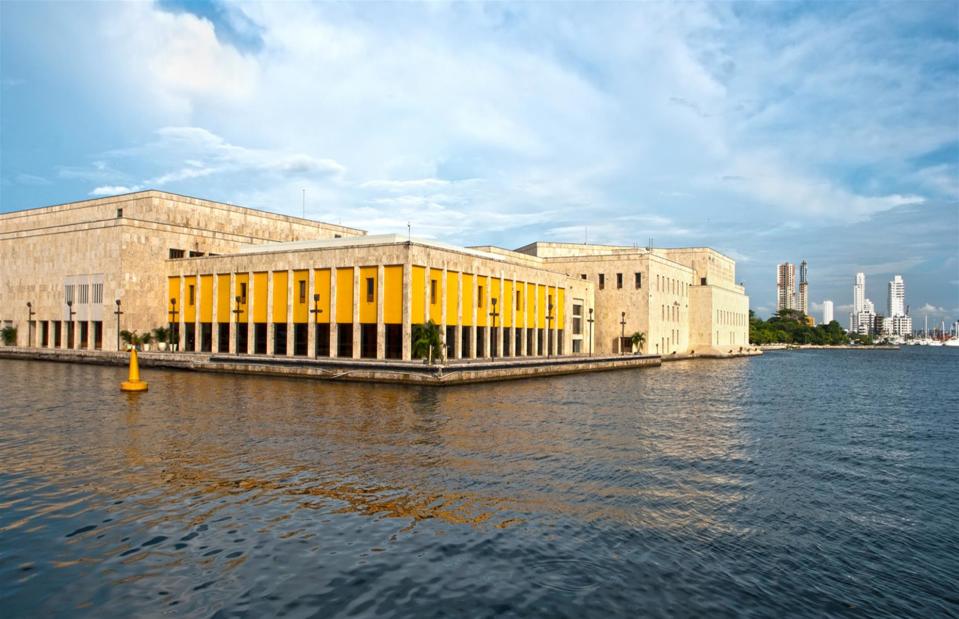
Rocharibeiro/Shutterstock
Colombia’s historic port Cartagena is highlighted as another of the world's low-lying coastal cities highly susceptible to sea level rises and flooding, according to the UNESCO report. It was identified as one of 31 sites facing significant short and long-term risks due to the climate. The sea rise at Cartagena is more than twice the Caribbean average, due in part to land subsidence (sinking) that has likely been caused by extensive urbanisation.
Cartagena, Colombia
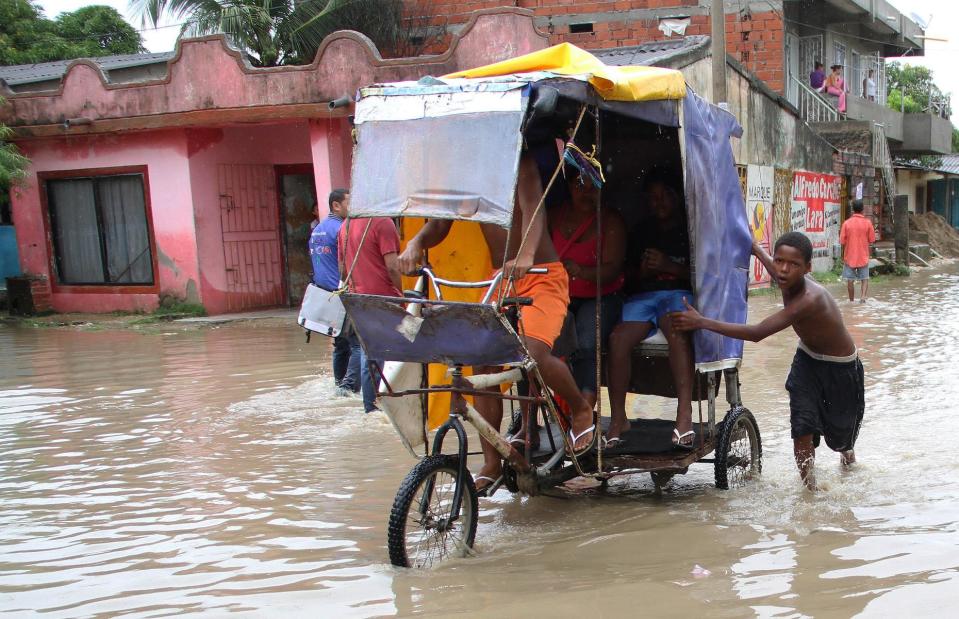
STR/AFP/Getty Images
Sat on the Caribbean coast, Cartagena de Indias was founded in 1533 and is famed for having one of the most extensive and complete complexes of military fortifications in South America. However, both the old and new parts of the city are vulnerable to the impact of hurricanes and other severe storms that are predicted to become stronger and more frequent as the oceans warm. For example, a sudden flood in February 2024 destroyed an ancient cemetery on Tierra Bomba Island. If sea levels continue to rise as predicted, Cartagena could be lost entirely to the waves by 2100.
Shiretoko Peninsula, Hokkaido, Japan
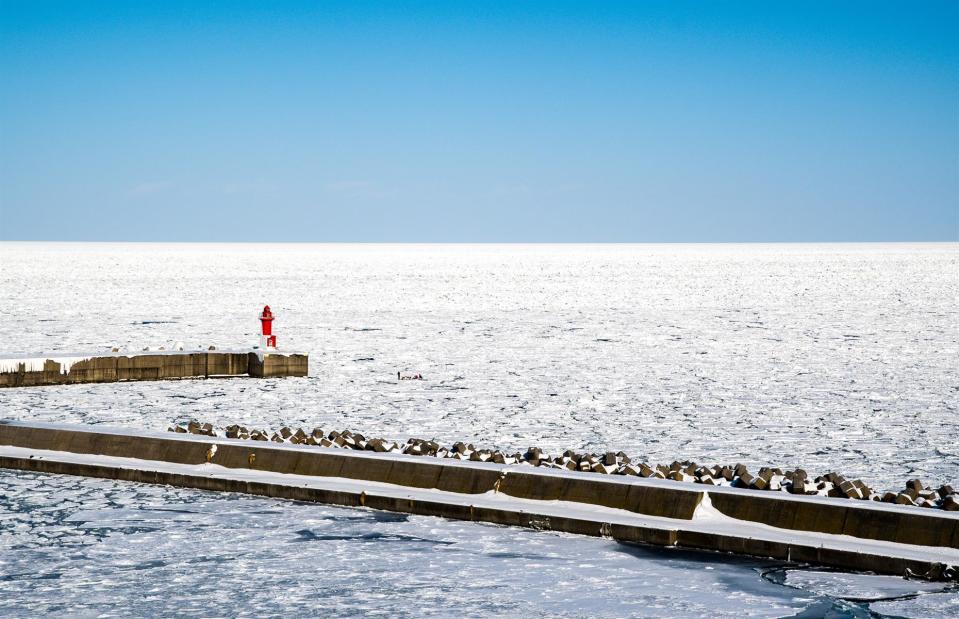
Tatsuo Nakamura/Shutterstock
Another unique part of the world threatened by warmer temperatures is the Shiretoko Peninsula, located in the northeastern corner of the Japanese island of Hokkaido. Jutting into the Sea of Okhotsk, sea ice forms here in winter and plays a key part in the marine ecosystem, causing phytoplankton to flourish which feeds the fish and in turn provides food for rare creatures such as Steller's sea eagles, Blakiston's fish owls, Steller sea lions and brown bears. However, this ice has been diminishing over the last 30 years as a result of warmer temperatures.
Greenland
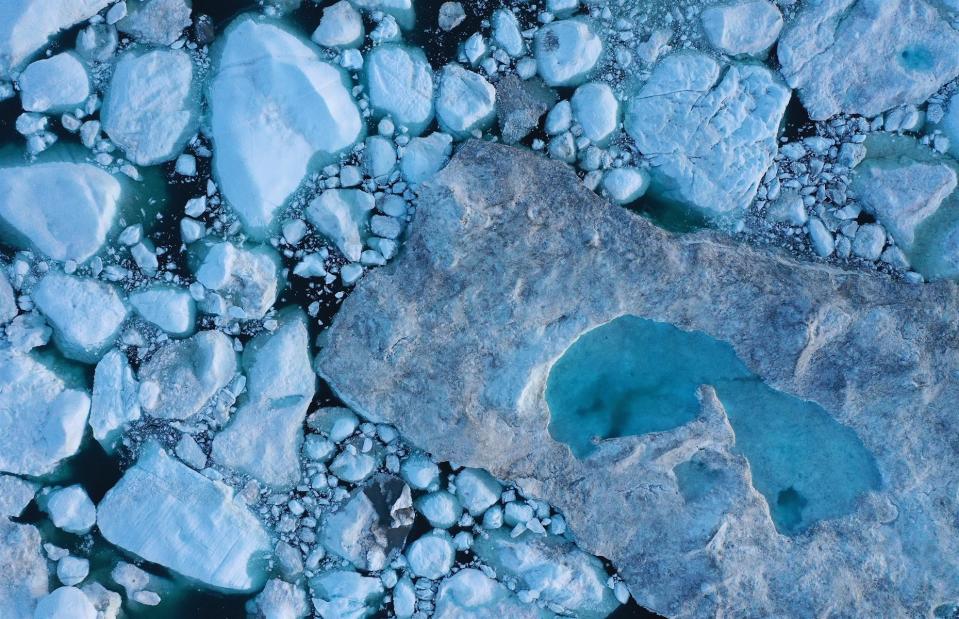
Sean Gallup/Getty Images
The ramifications of climate change on the world have been keenly seen in Greenland, where summers have become longer and the melting of its massive ice sheet has accelerated. If Greenland's ice sheet were to completely melt, global sea levels are likely to rise more than 20 feet (6m). The changing weather patterns are not only transforming the island's geography but its heritage – shorter winters and longer summers have affected hunting, dog sledding and endangered other traditional ways of life for the Greenlandic Inuit peoples.
Greenland

Sean Gallup/Getty Images
Watching the calving (splitting and shedding) of ice from a glacier is a spectacular sight and a natural process, but the accelerated retreat of Greenland's glaciers is a worryingly modern phenomenon. In this image, water gushes down from Eqip Sermia – one of the country's most active glaciers – in unprecedentedly high levels during the unseasonably warm weather that swept in from the Sahara in August 2019.
Hindu Kush Himalayan Region, Asia
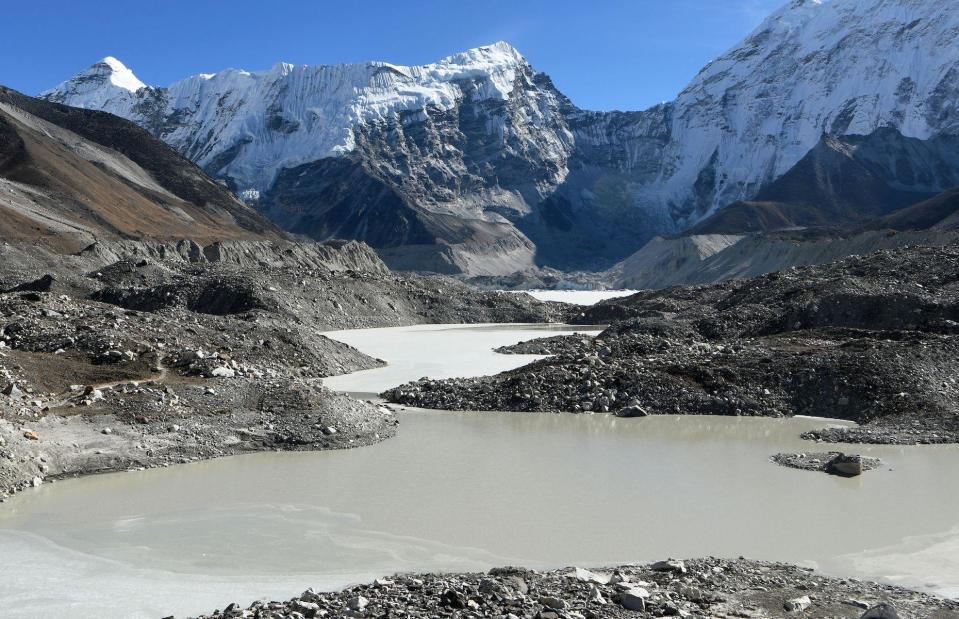
PRAKASH MATHEMA/AFP/Getty Images
While low-lying countries are vulnerable to global warming, so too are the highest parts of our planet. Warming temperatures and changes in precipitation are causing Himalayan glaciers to retreat and drastically altering patterns of water run-off. At least a third of the glaciers along the Hindu Kush and Himalaya range will have melted by 2100 due to climate change, according to a landmark report.
Hindu Kush Himalayan Region, Asia

PRAKASH MATHEMA/AFP/Getty Images
The loss of glaciers will have a devastating effect, including leading to landslides, flash floods and erosion, and will also impact water supplies in the long term. The glaciers are a critical water source for 250 million people who live in the Hindu Kush Himalayan region, which goes across Afghanistan, Bangladesh, Bhutan, China, India, Myanmar, Nepal and Pakistan.
The Maldives
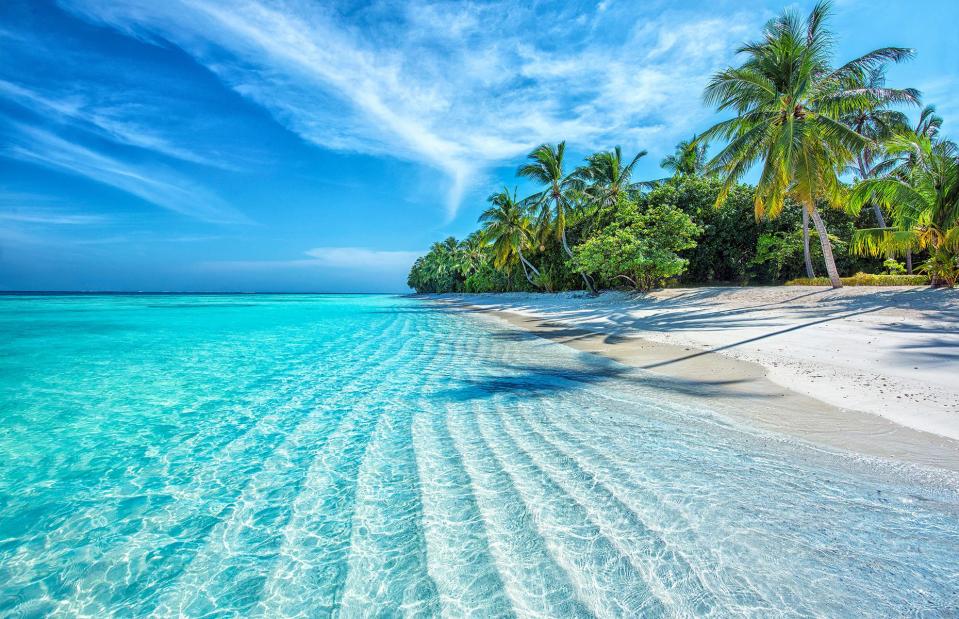
Altug Galip/Shutterstock
As the planet's lowest-lying country (most of its land is just a metre above sea level), it's no surprise that the island nation of the Maldives is set to suffer hugely from climate change. Although it's loved by tourists for its glassy waters, some scientists predict that the islands could completely disappear beneath the waves by 2100. Additionally, 70% of the Maldives' rich coral ecosystems were devastated by the 2016 coral bleaching event, itself caused by rising ocean temperatures.
The Alps, Europe

Elena Protcheva/Shutterstock
Heading off to the Alps for an annual ski trip may soon become a thing of the past. Europe's stunning peaks are seeing a shorter season for winter sports with higher temperatures degrading permafrost layers, causing slope instability, rock falls and landslides. Glaciers are retreating here as they are in many parts of the world as the climate warms. The mountain chain’s glaciers are expected to shrink by more than 80% by the end of the century, according to research.
The Alps, Europe
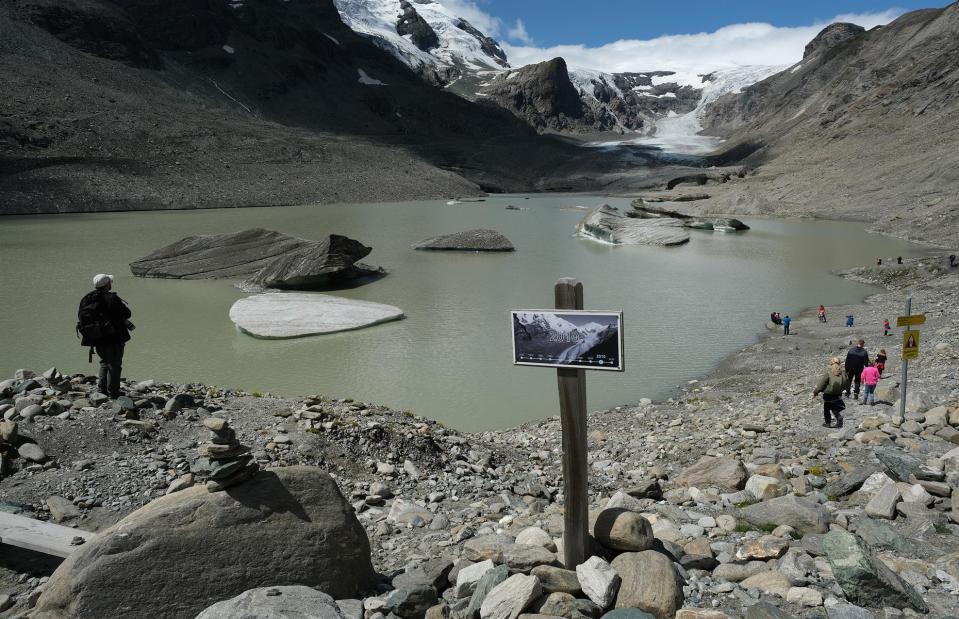
Sean Gallup/Getty Images
One of Europe's rapidly retreating glaciers is the Pasterze Glacier, Austria’s largest, which has lost half its volume since the 1850s. This image shows a sign where the Pasterze Glacier reached in 2005. Along with others, it has been receding due to higher summer temperatures and lower winter snowfall. Switzerland held a 'mourning ceremony' on its evaporating Pizol glacier in 2019 – the glacier in the Glarus Alps has lost up to 90% of its volume since 2006.
Statue of Liberty, New York City, New York, USA
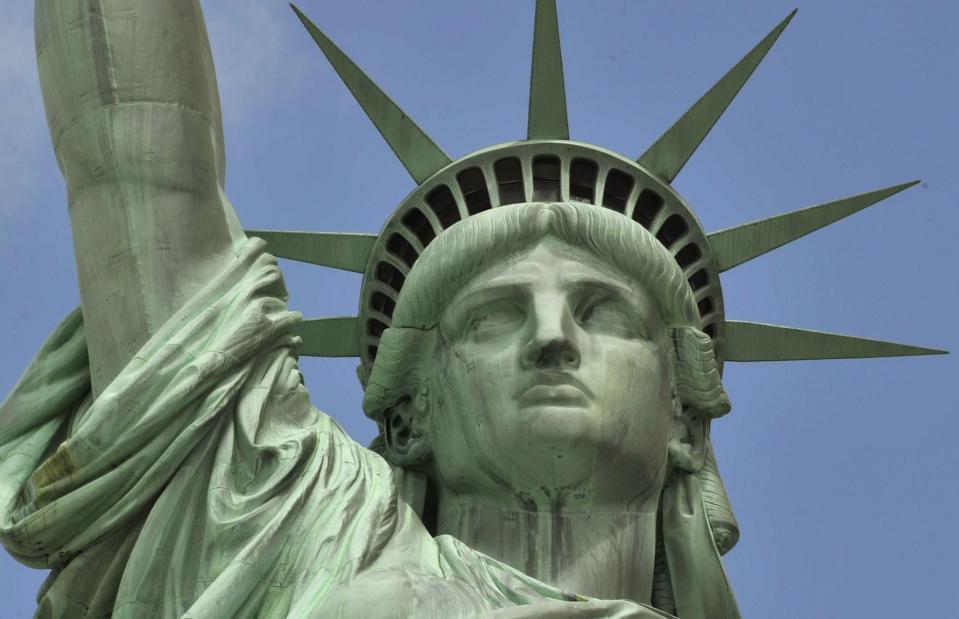
TIMOTHY CLARY/AFP/Getty Images
The commanding Statue of Liberty, America’s long-standing symbol of freedom, is not exempt from severe weather either, UNESCO reports. In October 2012, flood waters from Hurricane Sandy submerged three-quarters of Liberty Island and almost all of Ellis Island. Although the iconic statue itself was not damaged, the historic site's infrastructure was severely hit by the storm surge, including its docks, which were completely destroyed.
Statue of Liberty, New York City, New York, USA
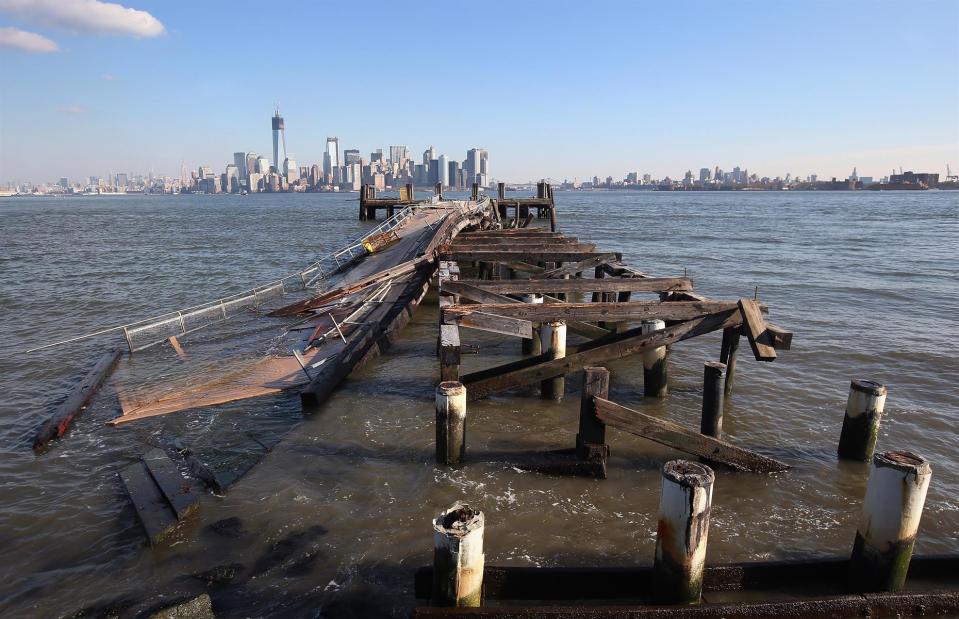
John Moore/Getty Images
In the future, it may not escape unscathed. The iconic landmark has been pinpointed as a heritage site at risk of being irreparably damaged and potentially washed away due to rising sea levels and intensifying storms causing huge storm surges. The water on the East Coast of the US is among some of the fastest rising water in the world.
Sintra and Cascais, Portugal
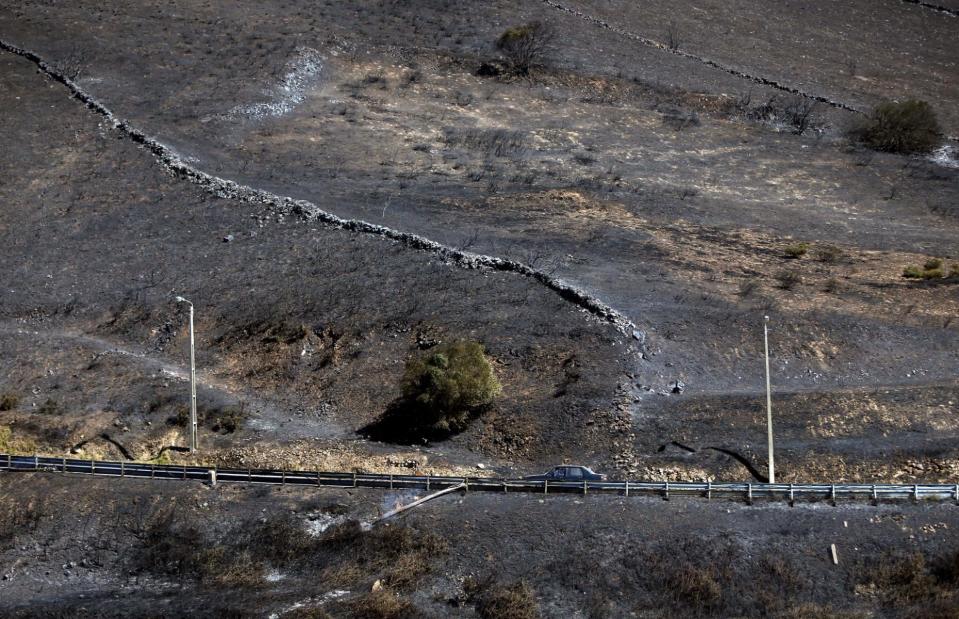
REUTERS/Alamy Stock Photo
With severe droughts all over the country and temperatures rising unusually high in the past decade, Portugal has experienced multiple devastating wildfires, including those that hit the popular destinations of Sintra in 2018 and Cascais in 2023. Beloved by tourists for their incredible landscapes, coastal splendour, national parks and enchanting castles, these regions within easy reach of Lisbon are at risk of being changed beyond our recognition.
Machu Picchu, Peru
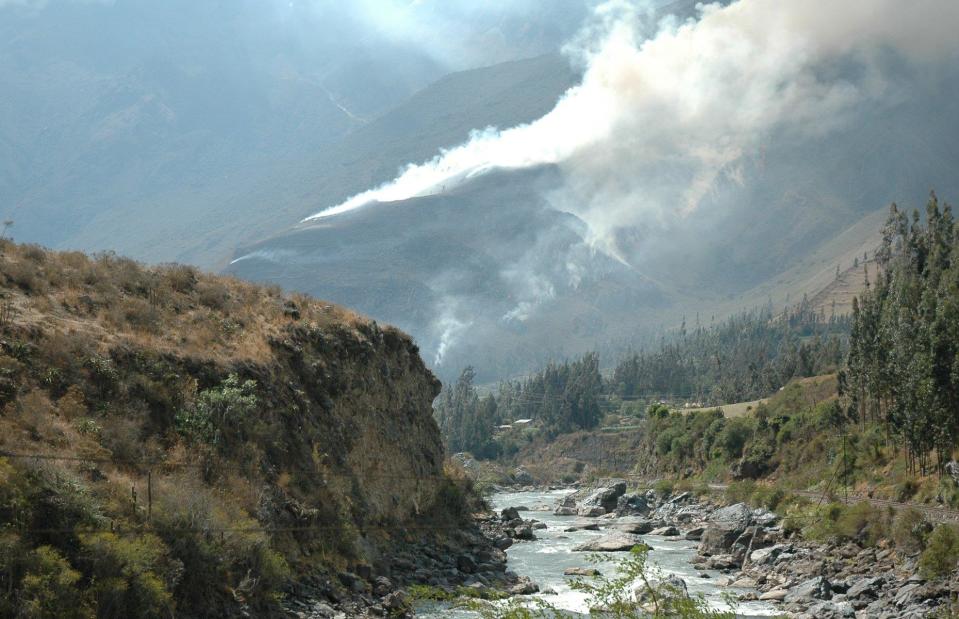
camiguti/Shutterstock
Hidden deep in the Eastern Cordillera mountain ridge, Machu Picchu, Peru’s most popular tourist destination, has recently been put at risk due to wildfires. In 2021, the number of wildfires rose to 333 for the whole year – and the ancient city was threatened again by encroaching bush blazes in 2022.
Machu Picchu, Peru
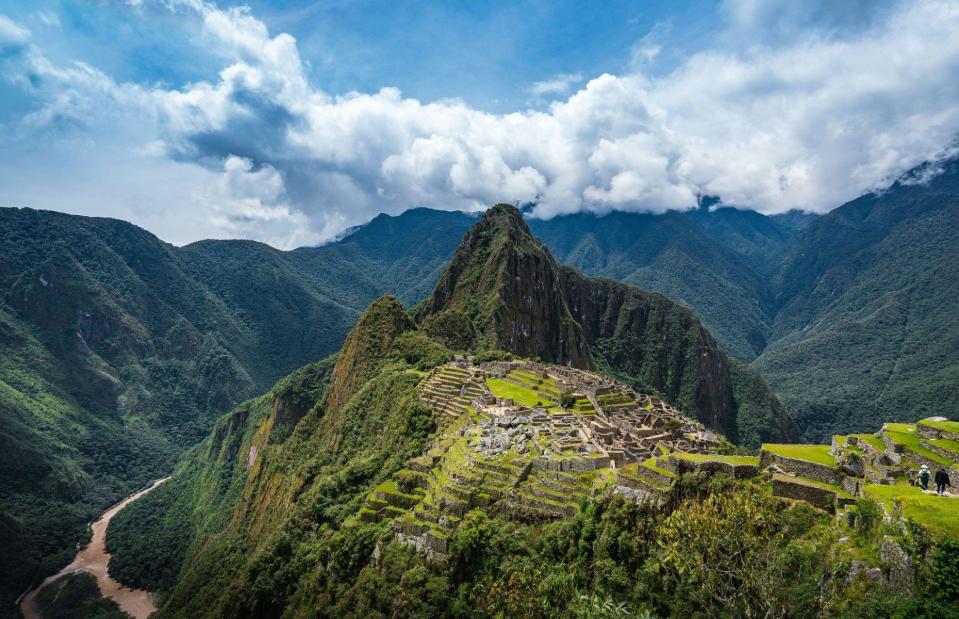
R.M. Nunes/Alamy Stock Photo
Due to the landmark’s precarious location, firefighters have difficulty accessing and stopping fires before they reach the Inca monument. In June 2022, a wildfire started only six miles (10km) from the archaeological park, but was luckily stopped four days later before it could reach the site itself. Unfortunately, it had already destroyed 98 acres of vegetation surrounding Machu Picchu before it was finally controlled.
Olympia, Greece

Milos Bicanski/Getty Images
Greece is packed with ancient cultural monuments, swarmed by tourists year-round. In recent years, climate change has become a growing threat to these historic landmarks. In July 2021 Olympia, the site of the first Olympic Games, was put at risk by raging wildfires that lasted for weeks. Firefighters had to stop the fires from reaching the ancient town more than once.
Mohenjo-daro, Pakistan
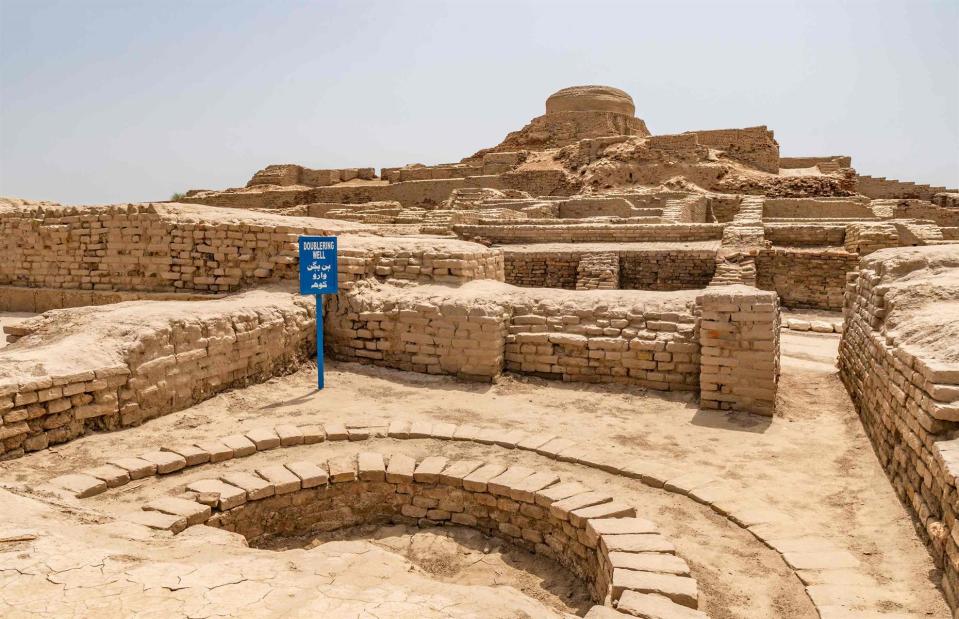
AlexelA/Shutterstock
One of the world's first major cities – contemporaneous with Mesopotamia and ancient Egypt – 4,500-year-old Mohenjo-daro is the jewel in Pakistan's archaeological crown, but devastating floods caused by an unprecedented 2022 monsoon season dealt the site dire damage. Walls that stood for millennia were swept away by the monsoon rain, which killed hundreds and left around a third of the country underwater, while much of the rest of the city suffered severe erosion.
Mohenjo-daro, Pakistan

AlexelA/Shutterstock
A UNESCO World Heritage Site, Mohenjo-daro was built by the ancient Indus Valley civilisation and contains a grid system of baked brick houses, a large granary and at least two assembly halls. The site's most important building, a large hemispherical 'stupa' associated with worship, was mercifully undamaged.
Now check out the world's oldest attractions still loved by tourists today...


